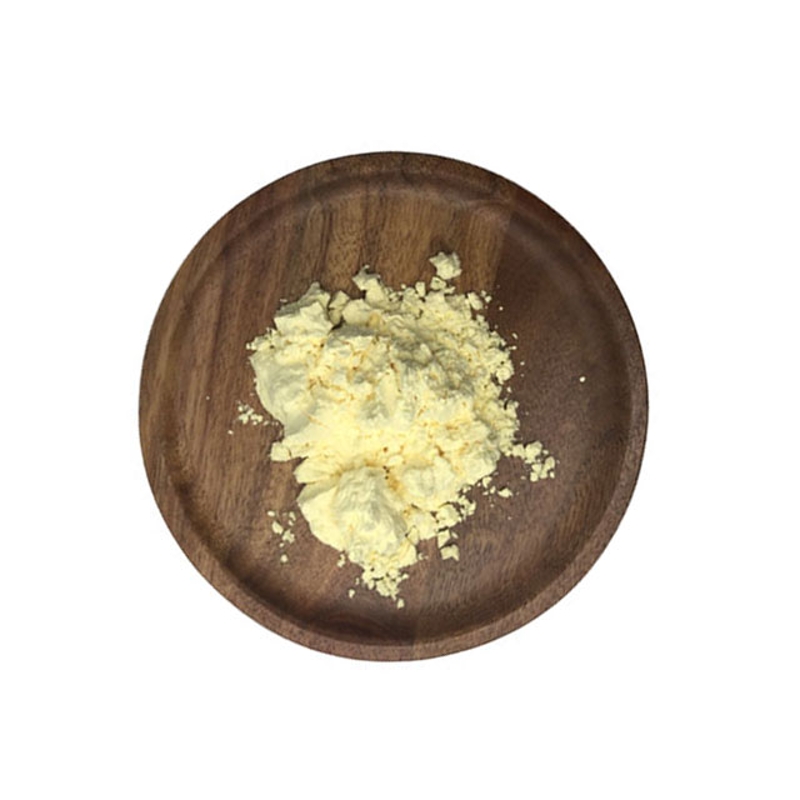The study revealed a new mechanism for cholesterol metabolites to regulate innate immune resistance.
-
Last Update: 2020-07-23
-
Source: Internet
-
Author: User
Search more information of high quality chemicals, good prices and reliable suppliers, visit
www.echemi.com
In viral or bacterial infection, host cells can participate in anti infection through a variety of effective ways.among them, viral infection can induce host cells to change the expression of cholesterol metabolizing enzymes and metabolites, and cholesterol metabolism can also regulate the antiviral response of host cells.on December 24, influence published online the research results of the cooperation between Wang Hongyan, a researcher at the center for excellence in Molecular Cell Science / Institute of Biochemistry and cell biology, Chinese Academy of Sciences, and Wei bin, Professor of Shanghai University (former researcher of Wuhan Institute of virus research, Chinese Academy of Sciences): targeting 7-dehydrocholesterol reduce integrate cholesterol metabolism and IRF3 activation to eliminate infection。in order to find cholesterol metabolizing enzymes or corresponding natural products involved in antiviral infection, they screened liver tissues or macrophages from liver cancer patients infected with hepatitis B virus, mice infected with various types of viruses, and found that the expression of 7-dehydrocholesterol reductase (DHCR7) was significantly decreased in response to DNA virus or RNA virus infection.DHCR7 is a key enzyme that converts 7-dehydrocholesterol (7-DHC) into cholesterol. Patients with DHCR7 mutation show mental retardation, but it is not clear how DHCR7 regulates the function of innate immune antiviral infection.by constructing conditional DHCR7 knockout mice, DHCR7 knockout or knockout macrophages, and blocking DHCR7 enzyme activity with small molecule inhibitors, the IFN β production mediated by viral infection can be significantly enhanced. In addition, the content of 7-DHC in liver tissue infected by virus, macrophages treated with DHCR7 deletion or its inhibitor increased, and the addition of natural product 7-DHC also promoted the anti infection function of macrophages.interestingly, tamoxifen, a chemotherapeutic drug used to treat breast cancer, has been approved by FDA to inhibit DHCR7 enzyme activity. This study found that tamoxifen has a new function of inhibiting vesicular stomatitis virus (VSV) and zikv infection.when mice were treated with AY9944, a DHCR7 inhibitor, the content of 7-DHC in serum was significantly increased, which protected mice against lethal dose of VSV and influenza virus (H1N1).further exploration of the mechanism found that the macrophages at rest expressed a very low level of Akt3. Virus infection promoted the expression of Akt3, and the metabolite 7-DHC could promote the activation of pi3k-akt3.in addition, Akt3, as a protein kinase, directly binds to IRF3, enhances the phosphorylation of IRF3 at serine 385, thus promoting the formation of IRF3 dimer and transferring to the nucleus, and finally enhancing the production of IFN β.Akt3 knockout mice significantly reduced the production of IFN β and increased the viral load, resulting in more death of mice.in conclusion, 7-dehydrocholesterol reductase (DHCR7) in the cholesterol metabolism pathway can lead to the accumulation of 7-dehydrocholesterol, which can improve IFN β and antiviral function by activating Akt3 and IRF3.this study not only provides a new drug target to resist the infection of new or highly pathogenic viruses, but also provides a new insight into the regulation of innate immunity by reprogramming cholesterol metabolism.Wang Hongyan, Ph.D., Xiao Jun, and postdoctoral Li Weiyun are co first authors of the paper.the research was completed in cooperation with Zhai Qiwei, researcher of Shanghai Institute of nutrition and health, Chinese Academy of Sciences, Chen Hualan, academician of Chinese Academy of Sciences, Harbin Institute of veterinary medicine, Chinese Academy of Agricultural Sciences, and Yang Zhongzhou, researcher of Institute of model animals, Nanjing University.the research was supported by the National Natural Science Foundation of China, the Ministry of science and technology, and the Chinese Academy of Sciences.the animal platform, cell platform and molecular biology technology platform of the center of excellence in molecular cells provide strong support. left: model diagram of the study; right: cartoon science map (when an alien invades the earth, the early warning center (7-DHC) on the earth's surface sends emergency signal (Akt3) to IRF3, which makes the earth guards (IFN β) assemble rapidly and transport them to the universe to resist the alien bodies). source: Center for excellence in molecular and cellular science, Chinese Academy of Sciences
This article is an English version of an article which is originally in the Chinese language on echemi.com and is provided for information purposes only.
This website makes no representation or warranty of any kind, either expressed or implied, as to the accuracy, completeness ownership or reliability of
the article or any translations thereof. If you have any concerns or complaints relating to the article, please send an email, providing a detailed
description of the concern or complaint, to
service@echemi.com. A staff member will contact you within 5 working days. Once verified, infringing content
will be removed immediately.







